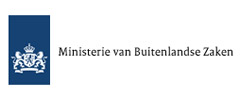Russia - Forest fires and nuclear plants: how to avoid the worst scenario?
Forest fires are spreading in the Moscow region, getting closer to nuclear plants, including Mayak, a plant dedicated to the disposal of nuclear waste
11.08.2010 | WECF Press Release
Forest fires subsequent to heat waves…
After a few days, forest fires subsequent to heat waves have already destroyed some 200,000 hectares of forest in Russia, creating a smoke cloud containing carbon monoxide above Moscow, resulting in 700 deaths daily in the capital, i.e. twice as many deaths as usual, as stated by the authorities. These forest fires represent a huge threat, since they are getting closer to power plants. Whereas firefighters and civilians are mobilized, the situation is still highly critical.
Threatening nuclear plants
And yet, the loss of biodiversity and huge forest areas are not the only consequence of these wildfires, since they are spreading in a region where several nuclear plants are located. Amongst these plants, Sarov and Snejensk, located around 500 and 1500 km from Moscow, and Mayak, a major Russian nuclear plant dedicated to the disposal and reprocessing of nuclear waste, located 200 km east from Moscow, not mentioning areas close to the Chernobyl region. Concerns are growing about the dramatic health and environmental consequences for the local population, and more generally about the areas which would be contaminated by potential radioactive clouds.
Mayak 1957- 2010: a non-stop tragedy
Since a few days, Russian public authorities have declared the state of urgency at Mayak. And yet, the situation has been having dramatic health and environmental consequences for the local population ever since 1957, when a Maximum Credible Accident contaminated thousands of peoples by exposing them to chronic high doses of radioactivity after a tank of highly radioactive waste exploded. Nadezhda Kutepova, a Russian lawyer who has been defending the victims of the Mayak catastrophe for years, and is an active member of WECF, remembers of the huge number of cancers and disabled children in the area of Mayak. An uncontrolled forestfire would only mean a revival of the catastrophe, since certain nuclear waste are still stored in open reservoirs.
Possible consequences of forest fires reaching nuclear plants
According to the French Institute for the Radioprotection and Nuclear Safety (IRSN), there are three types of consequences which could arise from the current situation in Russia. Firstly, thermal radiations could damage electrical systems, resulting in a potential shut down of certain means of control of the plants. Secondly, toxic fumes arising from the fires would make it difficult for firefighters and others to intervene and stop the fires from spreading. Finally, only the nuclear waste ready for the transport would possibly be evacuated from the fire area, letting other waste, which could not be transported, within the plant. Some, such as the French network Sortir du Nucléaire do even fear an accident similar to the one of Mayak.
Areas close to Chernobyl on the way of being reached by the flames
Several observers have stated that if the flames reach the vegetation around Chernobyl, radioactive element, such as cesium 137, would be set free in the air. The French IRSN, even if reasserting there is no danger so far, admitted to follow closely the evolution of the situation in Russia. It reminded of 2002, when serious forest fires hit some of the Chernobyl contaminated area and resulted in a visible increase of cesium 137 levels in the air, i.e. in France. Today, the Russian authorities recognized for the first time that fires had hit radioactive land (source: BBC news).
WECF strongly hopes that Russia, with the help of the international community, will be able to prevent dramatic consequences of the current situation, which seems on the way to become a dramatic ecological and health crisis.
sources :
- The Critical Question: first hand reports from the frontlines of the nuclear power chain, interviews, book published by WECF
- Réseau Sortir du Nucléaire: communiqué de presse, lundi 9 août, http://www.sortirdunucleaire.org/actualites/communiques/affiche.php?aff=706
- France 3, Soir 3 Lundi 9 août,http://jt.france3.fr/soir3/
- IRSN: http://www.irsn.fr/FR/Actualites_presse/Actualites//Pages/20100805_incendies-forets-russie.aspx
- TV5 Monde : http://www.tv5.org/cms/chaine-francophone/info/p-1911-Incendies-en-Russie-Moscou-respire-mieux-des-sites-nucleaires-menaces-par-les-feux.htm?&rub=2&xml=newsmlmmd.9532e80f5aa88696aae1d3465148eddb.431.xml
WECF WECF is a unique network of over 100 grassroots women and environment organisations worldwide, working in multi-sector partnerships demonstrating sustainable development alternatives at the local level, and sharing lessons learned and promoting sustainable policies at the global level.
contact:
Elisabeth Ruffinengo
Advocacy Officer, WECF France
elisabeth.ruffinengo@wecf.eu

































